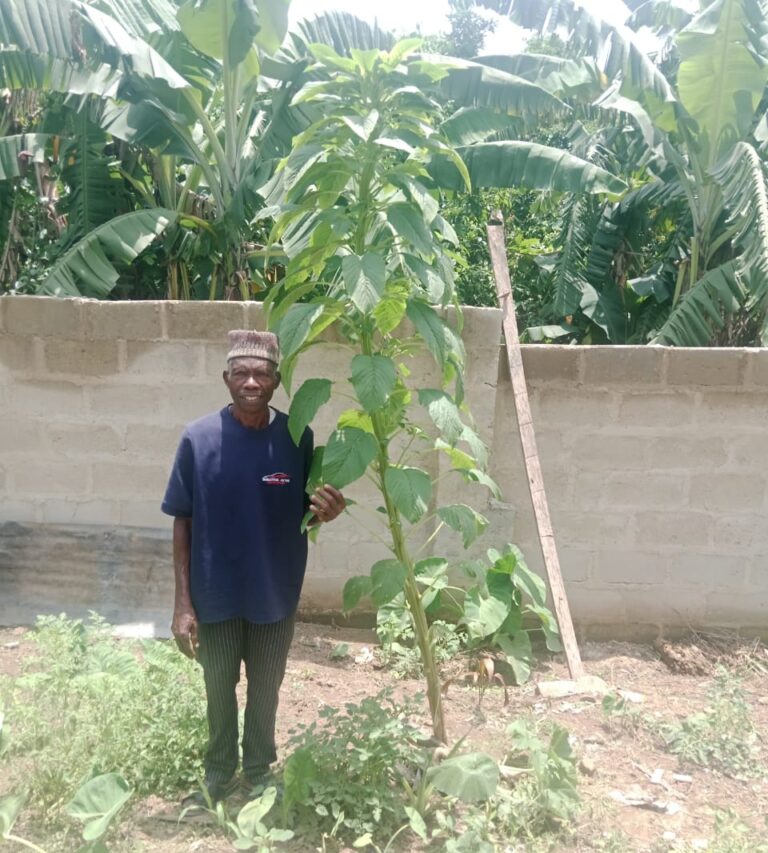
Ekiti farmer grows Africa’s record-breaking spinach plant
A towering 9.5-foot-tall African spinach has been discovered in Ikoro-Ekiti, a town in Ekiti State.
The plant, locally known as Efo Tete, and possibly the tallest ever recorded in Africa, has sparked scientific curiosity and tourism interest.
This was contained in a statement made available to the News Agency of Nigeria on Friday in Lagos.
The statement was signed by Mr Wale Ojo-Lanre, Director-General of the Ekiti State Tourism Development Bureau.
According to Ojo-Lanre, the spinach, which is still growing and has yet to produce seeds, was discovered in the backyard of Mr. Lawrence Ajolokan, a farmer in the Eso-Obe Local Council Development Area of the state.
“This isn’t just a plant. It’s a potential world record holder, a scientific curiosity, and a tourism gem all wrapped in one,” said Ojo-Lanre.
Ajolokan explained that he planted the seed in June 2024 and had harvested parts of the plant previously.
However, he said he consistently avoided harvesting one particular stalk due to a strange instinct that “something” told him not to weed or harvest it.
While left untouched, the spinach kept growing to its current height of 9.5 feet, and it is still growing with no visible fruiting yet.
Ajolokan said he did not realise the plant’s uniqueness until Mr Lester Olaifa, a journalist and community leader in Ikoro, drew his attention to its unusual height and thickness during a visit to his farm.
Mr Bankole Ayeni, Chairman of Eso-Obe LCDA, stated that protective measures had been put in place to preserve the plant.
According to the statement, interest from both the tourism and agricultural sectors is growing, as the spinach has surpassed the previously tallest known African spinach, which measured 8.3 feet and was recorded in Benue State in 2018.
The traditional ruler of the community, the Olukoro of Ikoro-Ekiti, Oba Adebanji Adeleye, praised the state government for its swift response to the discovery of the unique plant.
“Ikoro is not just an ancient town, but a custodian of living heritage,” he said.
NAN reports that the bureau has begun documentation and is consulting agricultural experts to investigate the factors behind the plant’s unusual growth, as well as to discuss plans for its preservation and possible future exhibition.
NAN
